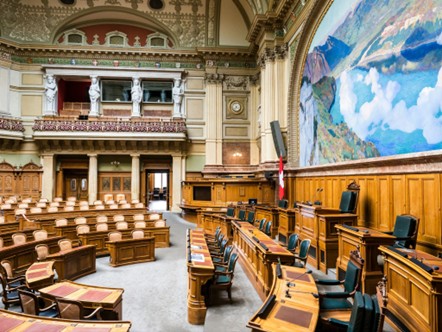
May 8, 2024
US Government Takes Steps to Boost Carbon Offset Market Credibility
The United States is set to release new guidelines for carbon offsets to enhance market confidence and ensure genuine emissions reductions.

The claim that Arctic ice melt is just a natural cycle is a common misconception that fails to capture the full picture of what’s happening to our climate. While it’s true that the Earth’s climate has gone through natural ups and downs over thousands of years, the rapid warming and ice loss we’re seeing today is very different from those historical patterns.
The Arctic is like the canary in the coal mine when it comes to climate change – it’s a super sensitive indicator of what’s happening to our planet. So when the sea ice up there starts melting like crazy, it’s a big red flag that something serious is going on.
If you look at the satellite data, it shows a rapid decline in Arctic sea ice over the past 45 years, especially at the end of each summer melt season.[1] This matches exactly what climate scientists predicted would happen as the planet warms up. As the Arctic gets hotter, the ice volume is shrinking fast. The thick, old ice that used to dominate is disappearing, replaced by thin, young ice that melts away easily each summer. 2012 was a crazy example, with a record-breaking melt that year.
If you zoom in on the last 200 years, you can really see the difference between natural and human-caused changes. There was a cold spell in the early 1800s, followed by a warming trend that lasted into the 1900s. But since the mid-1900s, the Arctic has been heating up way faster than ever before. And this matches the timeline of rising greenhouse gas emissions from human activities.
People who believe this myth often point to things like the Medieval Warm Period[2] or the Little Ice Age[3] as examples of natural climate shifts. They argue that the current changes are just another swing of the pendulum, and that humans aren’t really to blame. But this view oversimplifies a much more complex situation.
Evidence against the myth
Rapid temperature increases: The last decade has seen some of the warmest years on record, with global temperatures rising at an alarming rate. This rapid increase cannot be explained by natural cycles alone, as historical data shows that natural climate variations occur over much longer timescales, typically hundreds to thousands of years.
Human influence: The Intergovernmental Panel on Climate Change (IPCC) and numerous scientific studies have established that human activities, particularly the burning of fossil fuels and deforestation, are the primary drivers of the current climate crisis. A 2021 study indicated that 99% of peer-reviewed scientific literature supports the conclusion that recent global warming is predominantly human-induced[4].
Convergence of climate indicators: Various climate indicators, including rising ocean temperatures, increasing sea levels, and accelerated ice melt, all point toward a warming planet. If the changes were solely due to natural cycles, we would expect to see some indicators moving in opposing directions. However, all observed data trends indicate warming, which contradicts the notion of a simple natural cycle.
Misinterpretation of natural cycles: While natural cycles like the Pacific Decadal Oscillation (PDO) do exist, they have been extensively studied and show patterns that do not align with the current rapid warming trend. The PDO, for instance, has phases that alternate between warm and cool, but these variations do not account for the sustained increase in global temperatures observed since the mid-20th century.[5]
[1] https://skepticalscience.com/Arctic-sea-ice-melt-natural-or-man-made.htm
[2] https://www.britannica.com/science/medieval-warm-period
[3] https://www.science.smith.edu/climatelit/the-effects-of-the-little-ice-age/
[4]https://www.researchgate.net/publication/355458046_Greater_than_99_consensus_on_human_caused_climate_change_in_the_peer-reviewed_scientific_literature
[5] https://skepticalscience.com/global-warming-natural-cycle.htm

The United States is set to release new guidelines for carbon offsets to enhance market confidence and ensure genuine emissions reductions.

[form:total]
[field id=”total”]
[field id=”field_7d36af9″]